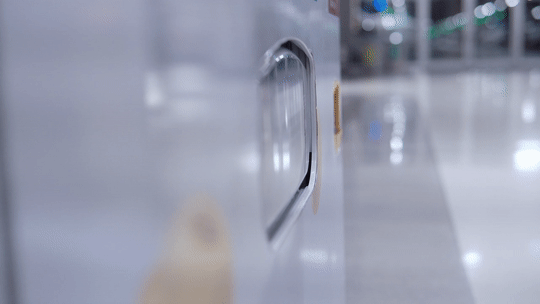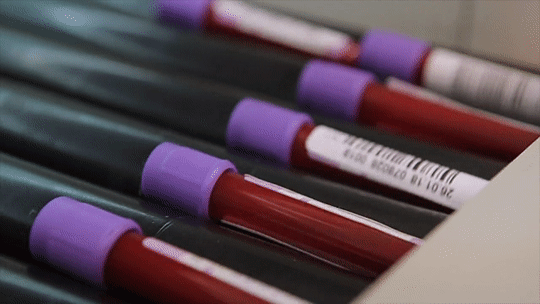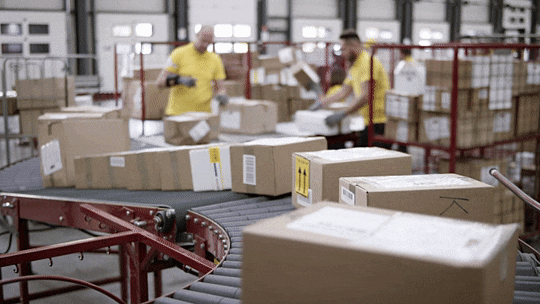Text
Without Standards, Would You Be Able to:
Turn on the Lights?
Operate Your Toaster?
Put Out a Fire?
Close a Window?
Start Your Car?
Drive to Work?
Eat at a Restaurant?
Travel to Outer Space?
#ansi#standards#standard#safety#building code#business#elevator#car#cars#automobile#recreational vehicle#commercial vehicles#motor vehicles#electric vehicles#hybrid vehicles#suv#collision#highway#parking#wheels#aerospacestandards#aviation#flight#outer space#astronomy#nasa webb telescope#nasa mars#nasa breaking news#planet#space
0 notes
Text
10 things you should know about the Oldowan Industry
It was the very first standard practice ever.
It was the first form of technology.
It began 2.6 million years ago in Tanzania (at the start of the Old Stone Age)
It involved striking a core (a rock) with a hammerstone (another rock). The core would break, leaving behind flakes, choppers, and scrapers.
The flakes, choppers, and scrapers were used essentially as Stone Age knives, cutting flesh from bone to prepare meals.
The Oldowan Industry spread throughout Africa, Asia, and Europe.
It was used by various human ancestors, including Homo ergaster and Homo habilis.
It was largely replaced by the Acheulian Industry 1.8 million years ago, which was characterized by hand axes.
We know about it through archaeological evidence uncovered throughout Europe, Africa, and Asia, such as hammerstones with battering along their surfaces, and flakes that came from the same core.
Even though the Acheulian Industry was more advanced, some places still used Oldowan techniques up to 250,000 years ago.
#oldowan#ansi#standards#standard#history#archaeology#stone age#paleontology#history of technology#technology
2 notes
·
View notes
Text
A Quick History of Elevators
You might not think about elevators much, but they've been getting people to where they need to go for a long time, and standards have been making sure that we reach those destinations safely.
The most concise history of elevators possible:
Archimedes invented the first elevator in 236 BCE.
The Romans used elevators in the Colosseum for lions and other animals to emerge from below the floor.
In 1743, King Louis XV had the "Flying Chair" in his palace in Versailles, which is considered the first passenger elevator.
The Industrial Revolution sped up the development of elevators with hydraulics and later steam power.
In 1854, Elisha Otis and his sons debuted an elevator that didn't drop if its cable snapped.
The advent of electricity saw passenger elevators (and taller buildings) in the early 1900s.
In 1921, ASME A17.1 was first published, and, with the help of periodic updates, this elevator code has kept us safe ever since.
#ansi#standards#standard#safety#business#elevator#elevator pitch#elevator etiquette#history#history of technology#building code#tall building#skyscraper#industrial revolution#colosseum#ancient rome#ancient greece#king louis xv#versailles#escalator#dumbwaiter
0 notes
Photo


You insert a coin or bill or swipe your card, and you get a dispensed soda or other item. But things are more complicated on the inside of vending machines.
The standard for vending machines, NSF/ANSI 25-2021, calls for materials to resist wear, but also penetration by vermin and the effects of foods, heat, cleaning compounds, sanitizers, and other substances that may contact the materials during use.
1 note
·
View note
Photo

Did you know that ANSI holds a complimentary orientation webinar each month?
On the first Friday of each month, join ANSI membership staff at 12pm EST for a free interactive presentation featuring a Q&A session. By attending a membership Orientation Webinar, you will learn about:
Ways to build valuable connections in your field
The impact of standards on your business
The role of US Technical Advisory Groups (TAGs) and the qualifications needed to serve on a tag
Which technical areas are working in collaboratives and how you can be a part of the action
Exclusive discounts on standards, car rentals, shipping, and more
Register now:https://www.ansi.org/membership/overview-webinar
0 notes
Text
Innovation Through Standards in the New Normal

The upcoming ANSI Company Member Forum (CMF) will be themed "Innovation Through Standards in the New Normal." Held on October 22 during World Standards Week, this event, held remotely via WebEx, will feature have an open discussion workshop where attendees share best practices and challenges they’re facing as a result of the pandemic, and how the standards landscape is impacted.
Don’t miss out on this chance to collaborate with colleagues to identify industry-wide challenges, and network among the standardization community. Register now! https://Ansi.link/CMF20
What is a Company Member Forum (CMF)?
Each CMF acts as a venue for ANSI members from across the expanse of U.S. industry to examine issues tied to national and global standards, as well as conformity assessment developments.
Past sessions have given attendees the opportunity to learn more about China standards reform, artificial intelligence, cybersecurity, sustainability and the circular economy, the effect of standards on 5G, and blockchain, as well as topics related to standards management.
Register for the upcoming WebEx event here: https://Ansi.link/CMF20
#ansi#standards#members#company#company member forum#cisco webex#pandemic#covid#covidー19#coronavirus#world standards week#innovation#new normal#register#free training#china#cybersecurity#circular economy#5G#blockchain#sustainability#artificial intelligence
0 notes
Photo

10 Steps to Get ANAB ISO/IEC 17024 Personnel Certification Accreditation
A certification is meant to prove personnel competency, but certification bodies (CB) need to convey that their program transfers that level of exalted skill to individual attendees.
Certification bodies can guarantee their excellence through ANSI National Accreditation Board (ANAB) accreditation against ISO/IEC 17024. It takes these 10 steps:
Step 1
Become familiar with ANAB Personnel Certification Policies and Procedures. Purchase and study the standard ISO/IEC 17024.
Step 2
Attend a Personnel Certification Accreditation Workshop
Step 3
Request ANAB to conduct an Informational Visit (pre-assessment).
Step 4
Fill out preliminary application form PCAC-FR-503.
Step 5
Pay the application fee and complete and submit PCAC-FR-504 in three copies with the supporting documents to ANAB.
Step 6
Submit additional documents that are requested by the assessment team.
Step 7
Prepare and participate in ANAB onsite assessment.
Step 8
Provide necessary documents to close any nonconformity identified during the assessment process.
Step 9
Upon successful closure of all nonconformities, the certification body will be awarded accreditation under ISO/IEC/17024.
Step 10
Ensure compliance with ANSI standards!
#17024#iso/iec 17024#personnel#competency#physician credentialing services#anab#anab accreditation#ansi#ansi accreditation#standards#certification#certification body#cb#certification accreditation#certification body accreditation#ansi standards#assessment#audit#onsite assessment#10 steps#nonconformities#conformities#accreditation#workshop#personnel certification#excellence#the best#training#certificate#certified
1 note
·
View note
Photo

Certification and Certificate
These two words, while nearly identical to the average Tumblr scroller, are quite distinct, and it is essential to understand the two in relation to the competencies that we depend upon in our professional lives.
According to the ANSI National Accreditation Board (ANAB):
“Certification and certificate are distinct terms. A certificate reflects completion of a training and/or education program and accomplishment of intended learning outcomes. Certificates are issued for life or for a specific time period, and cannot be revoked, which means they do not require ongoing maintenance or renewal. A certification reflects attainment of established criteria for proficiency or competency in a profession or occupation, and is granted upon an assessment of an individual’s knowledge, skills, and abilities. Certification is valid for a specific time period. A certification program has ongoing requirements for maintaining proficiency or competency, and can be revoked if ongoing requirements are not met.”
#certificate#certification#proficiency#competency#personnel#iso/iec 17024#accreditation#standards#remote assessment#learn online#learn#occupation#profession#certificate program#certification body#renewal#requirements#ANAB#ANSI#training#assessment
0 notes
Photo

What matters is on the inside, and modern medicine lets you know if that’s a problem.
When it comes to diagnoses, doctors, nurses, and other medical professionals depend on pathological work for precise guidance and aid. An international standard, ISO 15189, sets requirements for quality and competence to demonstrate the quality and reliability of medical laboratory services.
The ANSI National Accreditation Board (ANAB) accredits laboratories against this standard, helping assure excellence in the medical, scientific, and clinical community.
Not only does ANAB accreditation assess a medical lab’s adherence to ISO 15189, it includes five additional criteria:
Providing advice on the type of sample and testing that may be required.
Interacting with clinical staff with the laboratory responsible for the quality of service to clinicians referring patient samples for testing.
Providing opinions on results of testing relative to diagnosis and patient care.
Collecting samples or providing information on collection procedures, sample containers, and sample volumes.
Ethical practice.
Plus, while much of the world has stopped during the wake of the COVID-19 pandemic, medical laboratories are more important than ever. To help navigate the chaos during uncertain times, ANAB offers remote assessments.
#medical labs#laboratory#laboratory accreditation#lab#quality#competency#blood#test tube#test#ISO 15189#calibration#testing#samples#hospital#heathcare#bloodwork#clinical staff#clinic#ethics#accurate#reliable#timely#results#COVID#covid-19#virus#disease#detection#pathology#pathology tests
3 notes
·
View notes
Photo

Since the industrial revolution, greenhouse gas emissions have persisted as an unfortunate byproduct of modern life, deriving from electricity generation, agriculture, transportation, and other industrial sources.
Climate change has been discussed for decades, and in even more recent history, we see a drive to mitigate the problem at the source. Unfortunately, among the plenitude of complexities that come with combating this global issue, greenhouse gases (GHGs) like carbon dioxide, nitrous oxide, and methane, are invisible gases in the atmosphere.
Validation and verification bodies (VVB) help by assessing the accuracy of emissions claims. The ANSI National Accreditation Board (ANAB) accredits VVBs to the requirements of ISO 14065, and international standard, to assess the accuracy of their emissions claims.Through this program, ANAB legitimizes environmental claims as the world combats anthropogenic climate change.
#GHG#grenhouse#greenhouse gas#co2#carbon dioxide#methane#nitrous oxide#ammonia#climate change#emissions#environment#accreditation#ansi#iso#anab#anab accreditation#validation#verification#pollution#molecule#gas#vibrating dipole#vvb#natural gas#epa#environmentalism#anthropogenic
0 notes
Text
Have You Ever Seen An Eclipse From Space? Check It Out
On June 21, 2020 an annular solar eclipse passed over parts of Asia and Africa. Eclipses happen when the Moon lines up just right between the Sun and Earth, allowing it to block out part or all of the Sun’s bright face and cast a shadow on Earth.

On that day, the International Space Station was orbiting over Kazakhstan and into China when this picture of the solar eclipse shadowing a portion of the Asian continent was captured by an external high definition camera. In the left foreground, is the H-II Transfer Vehicle-9 from Japan.

Here is another angle as seen from the orbital lab. In the left foreground, is the Progress 74 resupply ship from Russia.
Make sure to follow us on Tumblr for your regular dose of space: http://nasa.tumblr.com
1K notes
·
View notes
Photo

You can find accreditation at the very top.
When an organization wants to establish and maintain a quality management system, they look to ISO 9001, the world’s most popular standard.
To prove adherence to the requirements of this essential standard, organizations seek out certification. In fact, 1 million organizations today are certified to ISO 9001.
But how do you know if certification bodies (CB) operate competently and follow international requirements? Accreditation. Accreditation is the means by which an authoritative body (ANAB) gives formal recognition that an organization (the CB) is competent to carry out specific tasks, thereby assuring the customer that the CB operates in accordance with accepted criteria.
The ANSI National Accreditation Board (ANAB) was the first management systems accreditation body in the United States ANAB issued its first accreditation for ISO 9001 in 1991. Management system accreditation by ANAB makes sure that quality practices persist worldwide.
#iso#ansi#iec#quality#quality management#quality management software market#quality management systems#boxes#conveyor#1 million#anab#accreditation#standard#certification#quality assurance#compliance#requirements#iso 9001#iso 14001#as 9100#management system
0 notes
Photo

Accreditation brings quality to the laboratory.
Laboratory operations are essential to the world we inhabit, and ANAB laboratory accreditation provides credibility and confidence for those who rely on tests, calibration results, and certification.
ANAB assessors evaluate a laboratory’s ability to produce precise, accurate test and calibration data under ISO/IEC 17025. There are also programs for medical laboratories that demonstrate the quality and reliability of their services through ISO 15189 and laboratories that regulate testing of drinking water, wastewater discharges, and hazardous waste cleanup sites throughout California under the California State Water Resources Control Board Environmental Laboratory Accreditation Program (ELAP).
Beyond consistent operations, ANAB accreditation delivers global recognition and a competitive advantage to laboratories.
And now, in the wake of the COVID-19 pandemic, ANAB offers remote assessments to make sure that laboratories throughout the world continue to strive for excellence during these trying times.
#accreditation#lab#laboratory#medical#laboratory accreditation#anab#ansi#iso#iec#iso/iec 17025#calibration laboratory#testing laboratories#calibration#excellence#quality#assessment#audit#inspection#remote assessment#covid-19#coronavirus#iso 15189#conformity#conformity assessment#CA ELAP#california#training#scientists#researcher#assessor
9 notes
·
View notes
Photo

Stay Relevant. Stay Connected. Get Involved.
ANSI and the standardization community has responded with guidance, resources, and initiatives to support public health, safety, and infrastructure during the Covid-19 outbreak .
Successful companies recognize that standards and conformance are strategic business tools.
Help support the U.S. voluntary standards and conformity assessment system. Ask us about the benefits of ANSI Membership at 212.642.8922 or email [email protected].
.
#ansi#ansi standards#iso#iso standards#standards#membership#join#covid-19#outbreak#ansi membership#strategic business tools#conformity assessment#public health#safety#infrastructure#get involved#earth#community#rotation#orbit
0 notes
Photo

Not all fire extinguishers are created equal
Did you know that, according to the standard for fire extinguishers, NFPA 10, any extinguisher made before 1955 should not be used no matter the circumstances?
Fire extinguishers also come in different classes, which work to put out fires of different sources. The one in your office (even if you’re not there right now) or at home probably fall under class A, B, and/or C.
#fire#nfpa#fire extinguisher#class a#class b#class c#class d#nfpa 10#standards#ansi#iso#standard#flame#burn#extinguish#1955#osha#office
17 notes
·
View notes
Photo

LEDs can be in use for over 50,000 hours, but this comes with a problem. While conventional lightbulbs instantly go out, LEDs deplete over time. Manufacturers and other depend upon ANSI/IES LM-80-20 to measure LED light.
#lightbulb#light#led#oled#incandescence#incandescent#ansi#ies#standard#electricity#illuminate#color#sun#let there be light#conventional#testing#measurement
1 note
·
View note
Photo

The total installed solar capacity in the US exceeds 77 gigawatts (GW).
More clean energy means greater movement towards sustainability, but the procurement and installation of solar photovoltaic (PV) materials and equipment can still be disruptive to nature and should be controlled in an environmentally-friendly manner.
To meet this need, NSF/ANSI 457 sets forth a standardized set of performance objectives for manufacturers and the supply chain in the design and manufacture of PV module components.
Looking at the management of substances, preferable materials use, life cycle assessment, energy efficiency & water use, end-of-life management & design for recycling, product packaging, and corporate responsibility, organizations can meet one of the three levels of performance: Bronze, Silver, and Gold.
#solar#clean energy#energy#renewable#power#clean power#renewable energy#100% renewable#photovoltaic#pv#sun#inverter#electricity#environment#sustainability#installing#sunny#wind#wind power
2 notes
·
View notes